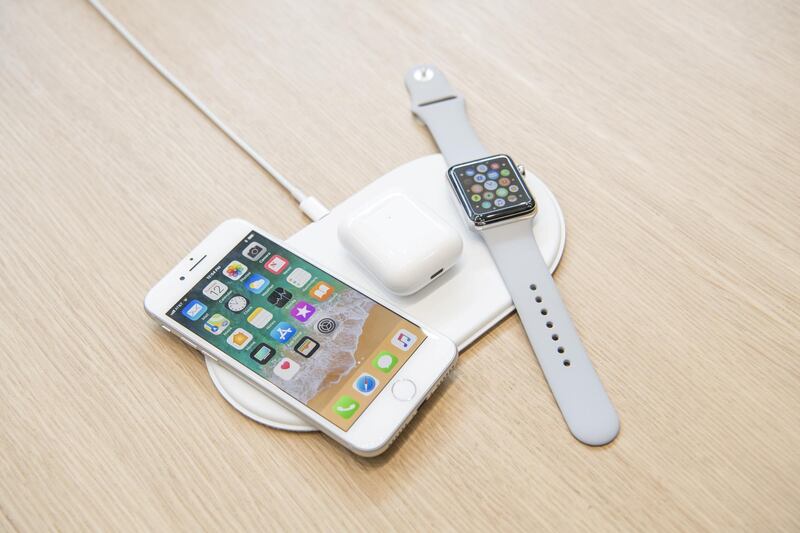As our dependence on smartphones escalates, we become slaves to their batteries. They beg for our attention as their power dwindles, and we come running with cables, chargers and power banks. Over the past few years, wireless charging pads have sought to relieve some of that stress by helping us repower batteries without having to plug anything in, but their development has been marked by problems: competing standards, incompatibility issues and slow charging times. In the past six months, however, there have been a number of shifts within the industry that could transform wireless charging from a neat gimmick into a crucial element of future technology.
_________________
Read more:
[ WhatsApp co-founder Jan Koum leaving Facebook ]
[ Facebook needs to quickly earn back the trust of users ]
_________________
A pivotal moment happened in September, when Apple announced that AirPower, its own wireless charging pad, would be released in 2018. That product still has not been given a release date, but its announcement revealed that Apple had chosen a wireless charging standard known as Qi (pronounced “chee”) over its main competitor, AirFuel.
“It reduced uncertainty for everyone,” says Menlo Treffers, chairman of WPC, the consortium of companies behind Qi. “With Apple and Samsung both supporting the same standard, this was a message of compatibility.”
Qi was henceforth crowned the winner of that particular format war, and consumers can now be confident that if their device supports wireless charging, and there is a wireless charging pad near by, then the two will probably work together.
AirPower is something of a misnomer, as all Qi chargers work via a process of electromagnetic induction rather than "over the air". Both the device and the charging pad are equipped with coils that interact when placed next to each other, creating a current that allows the transfer of wireless power.
Back in 2010 that power could reach only about 2.5W, but 5W is now common – ie, the same as a standard phone charger. With the advent of 7.5W and even 10W systems by the likes of Samsung and LG, we now have wireless chargers that are not only convenient, but work faster than the charger supplied with the phone. According to Treffers, such improvements will come thick and fast as more companies join the consortium (it’s up from 220 in September last year to 526 today). “It has introduced a lot of momentum, new initiatives and new features,” he says.
On the surface, the ability to charge a phone without a cable seems like a hyper-convenience that has minimal value. "Don't underestimate the psychological effect of not having to use two hands to connect a charger," Treffers says. "It appears to be marginal, but once you start doing it, it feels really different."
This is echoed by Dan Bladen, chief executive of Chargifi, an international company that partners with hotels, coffee shops and offices to supply wireless charging (and who piloted its service in the UAE in 2015.)
“Once you get used to it, your whole charging habit changes,” he says. “It creates a slightly addictive behaviour change; you tend to top up in an opportunistic way, rather than driven by necessity. And when you don’t have it, you really miss it.”
It’s clear that we’re seduced by this functionality. A 2016 consumer survey revealed that 98 per cent of people who had used wireless charging would want it incorporated into their next device, so little wonder that Apple threw its hat into the ring by making the latest iPhones compatible with Qi, and promising a pad that can charge several devices and manage those top-ups intelligently.
It also explains the surge of interest in Chargifi, who last week announced a £5 million (Dh25.3m) funding round and a plan to expand its installation of charging pads in public spaces across the United States and Asia. But excitement in the sector has been stirred up further by firms that are developing technology to charge devices over the air, at a distance.
In September, Energous received US regulatory approval for its "mid field" transmitter, named WattUp, which sends wireless power over a one-metre radius using radio frequencies. This news caused speculation about a future where charging may become automatic and our awareness of it completely disappears.
Sending power over the air, as any physics student will tell you, isn’t new; it’s been around since Nikola Tesla’s experiments with resonant coupling a century ago, and has been repeated many times since – for example, by Nasa in 1975, and more recently by Energous and its competitors such as Ossia and WiTricity.
_________________
Read more:
[ A look into the friction between Facebook and WhatsApp ]
[ Skype ban in the UAE: what the future may hold for VoIP services ]
_________________
The main obstacle for these companies, however, is getting regulatory approval for a device that sends sufficient power to charge a device while still being safe for humans to use. "There are real limits," Treffers says. "To get 5W into a phone would involve many orders of magnitude more than regulators would allow."
Engineers and competitors alike have subjected Energous’s claims to rigorous scrutiny, and have raised questions surrounding the size of device they might hope to charge, how quickly, how safely and how efficiently (a great deal of power is lost during transmission).
Their current certification describes a device supplying “greater than 100MW of power” – but that’s about 50 times weaker than a standard iPhone charger.
Steve Rizzone, chief executive of Energous, responds by alluding to the lifestyle change mentioned by Bladen of Chargifi. “Mobile distance charging will not, for the foreseeable future, have charging power comparable to a wall socket,” he says. “But if you are continually topping off your mobile devices, you do not need to enable the same amount of power because charging happens continuously.”
While we keep our dream of a perpetually charged phone on hold, there have been remarkable demonstrations of wireless power in other contexts, including 2,400W of power being delivered through a kitchen top to cook food; electric cars that recharge by parking on large pads (perfect for autonomous vehicles that currently require human intervention to plug them in); over-air charging of low-power devices such as remote controls; and software developed by the likes of Chargifi that can monitor charging and use the data in intelligent ways.
Combined, these innovations point to a future where the ability of devices to charge by themselves, without our help, should lead to them being incorporated ever closer into the fabric of society.





